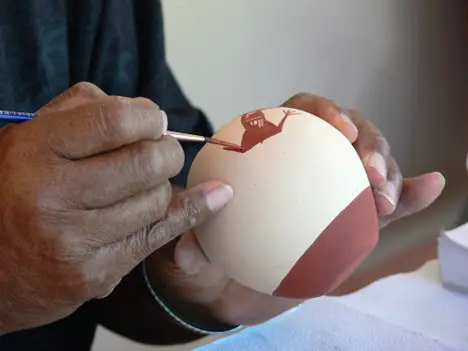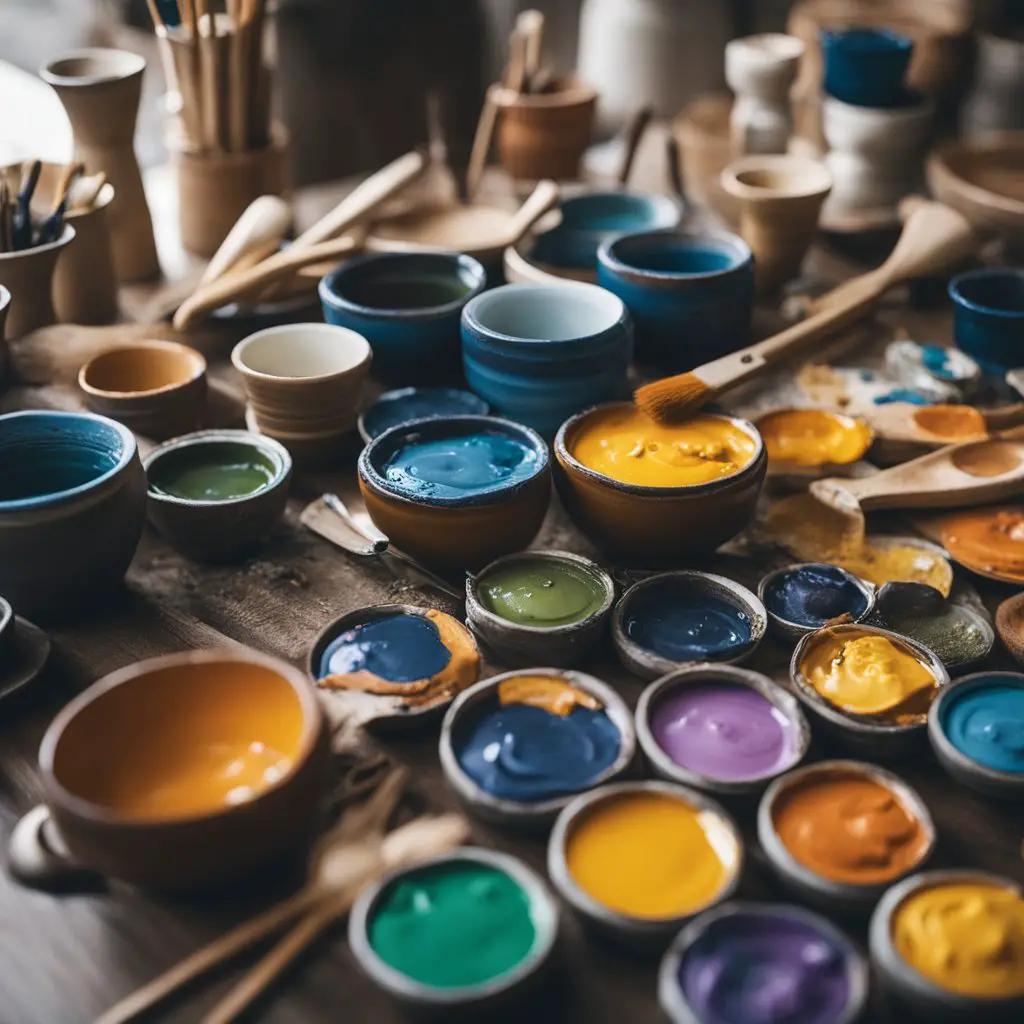Potters do not usually prefer to use something other than conventional paints to give their pottery wares an extra colorful effect. Usually, potters can be seen using underglazes, oxide stains, and slips to color their ceramic materials. When fired in the kiln, these unconventional “paints” stick to the surface of the clay, making them less likely to flake off in the future. However, there is still the scope of using conventional paint materials when it comes to a ceramic piece that is not for functional, everyday use but is intended for exhibition purposes.
5 Best Painting Methods to Use for Your Pottery

As mentioned earlier, there are various unconventional ways to paint your pottery. These methods prove impressively effective and do not chip off like regular paint. Let us discuss these in detail:
1. Slips:
Clay pottery may also be colored before firing by dipping it in a slip, a liquid suspension of clay particles in water. Both white slips and colorful slips with oxide tinting are acceptable. When throwing other pieces, some potters keep the slips left behind. Damp greenware works well with slips.
The following are three benefits of utilizing slips:
- Errors are considerably simpler to erase.
- The shrinkage of the clay is better matched by slip painting, which reduces the risk of heavier coatings coming off during drying or fire.
- Because the slip painting and the pot it is on our bisque together, you may use underglazes (or other engobes) to add more color to enhance the visual impact or better define the picture.
2. Underglazes:
If you use an underglaze that is thin enough and contains enough colorant to limit fading, you may create effects on ceramics reminiscent of watercolor paintings. When trying to achieve wash effects, AMACO’s semi-moist underglaze pans perform far better than liquid underglazes since they are much simpler to manipulate.
You can use liquid underglaze for results that resemble acrylic painting and its effects. Employ a technique more familiar to a painter and apply even more underglaze to the clay surface for this purpose. It is recommended to work in layers when applying liquid underglazes since many of them fail to reach their peak strength until three coats have been applied to the clay surface.
Be ready: Even though you can not see the top layers before firing, dark colors will seep through them.
3. Oxide Stains:
Oxide stains are excellent for producing large, colorful areas and flowing lines in paintings. It is also feasible to use commercially available stains made of fritted material, which maintains them chemically. On the other hand, you can make stains by combining earth oxides with water. But know that you shall always know what glaze goes over it. Certain oxides are temperamental, and depending on the components of the glaze, they can change their colors significantly. For example, the tin of chrome oxide glaze can become pink even when this component is primarily thought of as a green colorant.
4. Glazes:
Ceramics have been painted for many years by potters simply using glazes themselves. It comprises distinct sections with numerous glazes of varied colors and glaze-on-glaze painting, as seen in the majolica traditions.
The glaze is more prone to flow as it melts during the fire, which is one issue with this process. As a result, designs may droop, lose their edge definition, or even entirely blend into an underlying glaze.
5. Fingernail Polish or Acrylic Paint:
You are no longer constrained to painting pottery using ceramic materials when it does not need to be practical. Potters tend to decorate even non-functional pottery with various conventional colors. However, if the painted piece becomes wet or can be used for the long term, there is a chance that such non-ceramic paint choices will start peeling off. One medium where artists regularly utilize traditional paints is ceramic sculptures intended to serve as exhibition art.
Using two non-ceramic materials will be helpful to pursue this painting form. Acrylic paints are the most popular, while fingernail polish can also have significant effects. They are not soluble in water, a quality not seen in conventional paints.
In addition to being ineffective, applying fingernail polish or acrylic paint to clay surfaces will visibly flatten and harm the surface. It might be challenging to incorporate these elements with the clay visually.
Conclusion
The unconventional ways to paint your wares mentioned above have been tried and tested for the longest time. Artists and potters are continuously able to experiment with color combinations and give a new look to their creations altogether. With a careful demeanor, you, too, can bring your wares to life with these effective methods.







